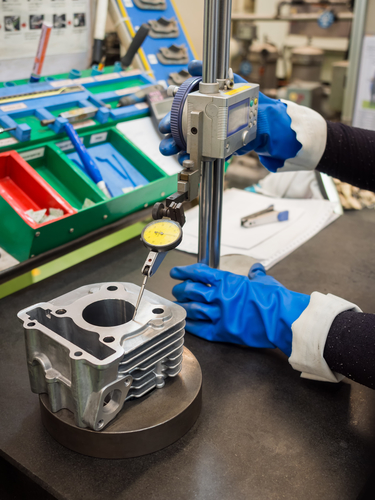One of the general-purpose tools that technicians use to measure precision parts is a height gage. These gages can measure the roundness, roughness, waviness, diameter, length, and thickness of a wide range of objects and materials. Today, almost 90 percent of height gages are utilized for surface plate work, including surface metrology (for analysis of features and textures) and surface analysis.
Basic Considerations
So, you have been tasked to purchase a height gage? It is important the you always consider what will be measured. After all, height gages vary in size, i.e. 14 inches, 24 inches, 40 inches, and more. Next, there can be large parts with more tolerances and small parts with tight tolerances. Your goal is to make sure that the height gage meets all your specific application needs, such as output formats, measuring length, probe tips, measuring angle, measuring force, resolution, and accuracy.
Know Your Applications
The common uses of height gages in medical applications include analyzing the finishing of medical implants, e.g. hip replacement implants and knee replacement implants. Gages utilized in these applications can measure as small as 0.01µm. That is a fraction of the size of a strand of human hair! On the other hand, you may be working in a manufacturing environment. You specialize in making aerospace, automotive, or medical parts. In these cases, height gages come in handy. In fact, they play many roles. For example, they can be used for 100% inspection, serial production monitoring, or part process set-up inspection.
Consider Your Environment
Did you know that one’s surroundings can contribute to errors in measurement? Cold, heat, sunlight, and moisture are some of the factors that have caused errors in readings. In other words, a gage’s location is important in determining the repeatability and accuracy of the measurement. For example, the results you get from using a height gage in an inspection room will be different from using and storing the gage on the shopfloor. It just so happens that there is direct sunlight entering as well as the presence of dust, dirt, humidity, and moisture.
Height Gage Features
The next point you need to note is that height gage manufacturers are constantly adding innovative features to their gages. These features are designed to make the gage more comfortable and easier to operate. Some of these features include soft keys, dedicated buttons, and ergonomic handles. So, the question is: Does the application or do you need these features? Are you also trying to reduce extraneous movement that causes strains or carpal tunnel? That’s not all. If your application requires a stable height gage, you should consider gages that feature bases which are made of granite, ceramic, or steel.
How Often Can You Calibrate?
You do not want to choose a product that you can’t maintain well. For height gages, you need to adhere to a calibration schedule between 12 and 18 months. Yes, you can send your height gages out to be calibrated. Just make sure they are calibrated with something that is more accurate than them.





